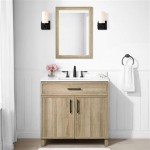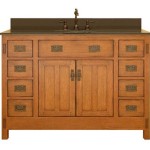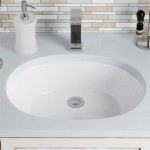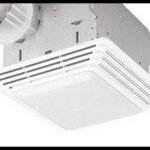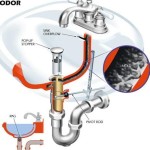30 Inch Unfinished Bathroom Vanity Base Cabinet (60cm): A Comprehensive Guide
The 30 inch unfinished bathroom vanity base cabinet, often equating to roughly 60cm in width, represents a popular choice for homeowners undertaking bathroom renovations or new construction projects. Its appeal lies in its adaptability, affordability, and the opportunity for customization. This article delves into the various aspects of this type of cabinet, covering material options, style considerations, installation methods, and the benefits it offers to both DIY enthusiasts and professional contractors.
An "unfinished" cabinet refers to a base unit that lacks a pre-applied finish, such as paint, stain, or sealant. This allows the buyer to select the exact color and texture they desire, matching existing bathroom decor or creating a completely new aesthetic. The 60cm (approximately 23.6 inches) conversion noted in the description typically refers to vanity depth, not width, as the metric conversion of 30 inches is closer to 76 cm, it is imperative to ensure the proper measurements are referenced against the product offerings.
The standard height of a bathroom vanity base cabinet typically ranges from 30 to 36 inches. The ideal height often depends on the user's preference and physical comfort. Some homeowners opt for taller vanities to minimize bending, while others prefer a lower height for aesthetic reasons or to accommodate specific plumbing configurations. When selecting a 30 inch unfinished bathroom vanity base cabinet, accurate measurements of the available space are critical to ensure a proper fit.
Material Selection for Unfinished Bathroom Vanities
The selection of appropriate materials is paramount for ensuring the longevity and durability of a bathroom vanity. Given the humid environment of a bathroom, materials must be resistant to moisture, warping, and decay. Several common materials are used in the construction of unfinished bathroom vanity base cabinets:
Solid Wood: Solid wood, such as maple, oak, cherry, or birch, is a premium material known for its strength and natural beauty. Solid wood vanities offer excellent stability and are less prone to warping than some other options. Maple is a particularly good choice for painting because of its smooth, even grain. Oak, with its more pronounced grain, is well-suited for staining. Solid wood, tends to come with a higher price tag, particularly when considering high-quality hardwoods.
Plywood: Plywood is an engineered wood product made by layering thin sheets of wood veneer glued together. It offers good strength and stability and is often more affordable than solid wood. Marine-grade plywood is a particularly durable option for bathroom vanities, as it is designed to withstand moisture exposure. Plywood is often used for cabinet boxes where it's hidden from plain sight or with a solid wood face frame.
Medium-Density Fiberboard (MDF): MDF is another engineered wood product made from wood fibers compressed with resin. It is smooth, consistent, and relatively inexpensive. MDF is an excellent choice for painted vanities, as it does not have a grain that can show through the paint. However, MDF is more susceptible to water damage than solid wood or plywood and should be sealed properly to prevent swelling and warping. It is often used for the doors and drawer of vanities in combination with plywood boxes.
Particleboard: Particleboard is the most economical of the engineered wood options. It is made from wood chips and resin, pressed into sheets. While it is relatively inexpensive, particleboard is also the least durable and most susceptible to water damage. Particleboard is typically not recommended for bathroom vanities unless it is adequately sealed and protected from moisture.
In addition to the core material of the cabinet, the hardware selection also plays a crucial role in both the functionality and aesthetics of the vanity. Hinges, drawer slides, and knobs or pulls should be of high quality and resistant to corrosion. Soft-close hinges and drawer slides are a popular upgrade that adds to the overall user experience.
Style and Design Considerations
The style and design of a 30 inch unfinished bathroom vanity base cabinet should complement the overall aesthetic of the bathroom. Whether the goal is a modern, traditional, or rustic look, the cabinet's design elements should reflect that style. A wide variety of styles and design options are available, allowing homeowners to find a cabinet that perfectly suits their needs and preferences.
Door and Drawer Configuration: The configuration of doors and drawers is a key design element. A single-door cabinet with a drawer beneath is a common configuration, providing both concealed storage and easy access to frequently used items. Other options include double-door cabinets, cabinets with multiple drawers, or a combination of doors and drawers. The choice depends on the storage needs and the desired aesthetic.
Door Style: The door style is a prominent feature that greatly influences the overall look of the vanity. Shaker-style doors, with their simple, clean lines, are a popular choice for both modern and traditional bathrooms. Raised-panel doors offer a more traditional and formal look. Flat-panel doors are a minimalist option that suits contemporary designs. The type of door chosen also needs to work with the hardware of the vanity.
Edge Profiles: The edge profiles of the cabinet doors and drawers add another layer of detail to the design. Rounded edges create a softer, more traditional look, while square edges offer a more modern and streamlined appearance. Ogee edges and other decorative profiles can add a touch of elegance and sophistication. The edge style also plays a role in the ability to clean the cabinet. Simpler, more basic edges are less prone to collecting dust and grim.
Toe Kick: The toe kick is the recessed area at the bottom of the cabinet that allows for comfortable standing while using the vanity. A standard toe kick is typically 3 to 4 inches high and 3 inches deep. The toe kick can be customized to suit individual needs, such as making it taller or deeper for users with mobility issues. Some vanities also feature decorative toe kicks that add to the overall design.
Ventilation: Proper ventilation is essential for preventing moisture buildup inside the cabinet, which can lead to mold and mildew growth. Ventilation can be achieved through the use of vented cabinet doors, open shelving, or the installation of a small fan inside the cabinet. Ventilation is especially important for vanities that house plumbing fixtures.
Choosing the right style and design is a key part of selecting the overall bathroom design and aesthetic.
Installation and Finishing of Unfinished Vanities
The installation process for a 30 inch unfinished bathroom vanity base cabinet is similar to that of a pre-finished cabinet. However, the finishing process requires additional steps, including sanding, priming, and applying the final coat of paint or stain. Proper installation and finishing are crucial for ensuring the longevity and aesthetics of the vanity.
Preparation: Before beginning the installation, it is essential to prepare the space. This includes removing the old vanity (if applicable), cleaning the area, and ensuring that the floor is level. Any necessary plumbing or electrical work should be completed before the vanity is installed. Accurate measurements should be taken to ensure that the vanity will fit properly within the available space.
Installation: The vanity is installed by securing it to the wall studs using screws or bolts. Shims may be needed to level the vanity if the floor is uneven. Once the vanity is securely in place, the plumbing connections for the sink and faucet can be made. The drain and water supply lines should be properly connected and tested for leaks.
Sanding and Priming: Before applying the finish, the vanity must be thoroughly sanded to create a smooth surface. Sanding removes any imperfections and prepares the wood for priming. A high-quality primer should be applied to seal the wood and provide a uniform base for the paint or stain.
Painting or Staining: The choice between painting and staining depends on the desired aesthetic and the type of wood used. Painting provides a solid color finish that can be customized to match any decor. Staining enhances the natural grain of the wood and adds warmth and character. Multiple coats of paint or stain may be needed to achieve the desired color and depth.
Sealing: After the paint or stain has dried, a sealant should be applied to protect the finish from moisture and wear. A clear polyurethane sealant is a popular choice for bathroom vanities, as it provides a durable and water-resistant finish. The sealant should be applied in thin, even coats, allowing each coat to dry completely before applying the next.
Hardware Installation: Finally, the hardware, such as knobs, pulls, and hinges, can be installed. The hardware should be aligned properly and securely fastened to the cabinet doors and drawers. The hardware is the "jewelry" of the vanity and can make all the difference in the aesthetic.
Proper installation and finishing are essential for the long-term performance and appearance of the 30 inch unfinished bathroom vanity base cabinet. By following these steps carefully, homeowners can create a beautiful and functional vanity that will last for years to come.

30 Inch Bathroom Vanity

30 Inch Bathroom Vanity

Unfinished Vanity

Home Decorators Collection Hanna 30 In W X 19 D 34 H Single Sink Bath Vanity Weathered Tan With White Engineered Stone Top 30wt The Depot

J Collection Devon Painted Blue Recessed Assembled 30 In W X 34 5 H 21 D Vanity False Front Sink Base Kitchen Cabinet Dsvs30 Dv The Home Depot

24 Ayanna Mindi Vanity With Rectangular Undermount Sink Natural Signature Hardware

Home Decorators Collection Hanna 30 In W X 19 D 34 H Single Sink Bath Vanity Weathered Tan With White Engineered Stone Top 30wt The Depot

Home Decorators Collection Hanna 30 In W X 19 D 34 H Single Sink Bath Vanity Weathered Tan With White Engineered Stone Top 30wt The Depot

60 Inch Saddle Brown Raised Panel Bathroom Vanity With Double Sink Furniture Drawers W X 34 5 H 21 D Finland

30 Ayanna Mindi Vanity With Rectangular Undermount Sink Natural Signature Hardware
Related Posts
